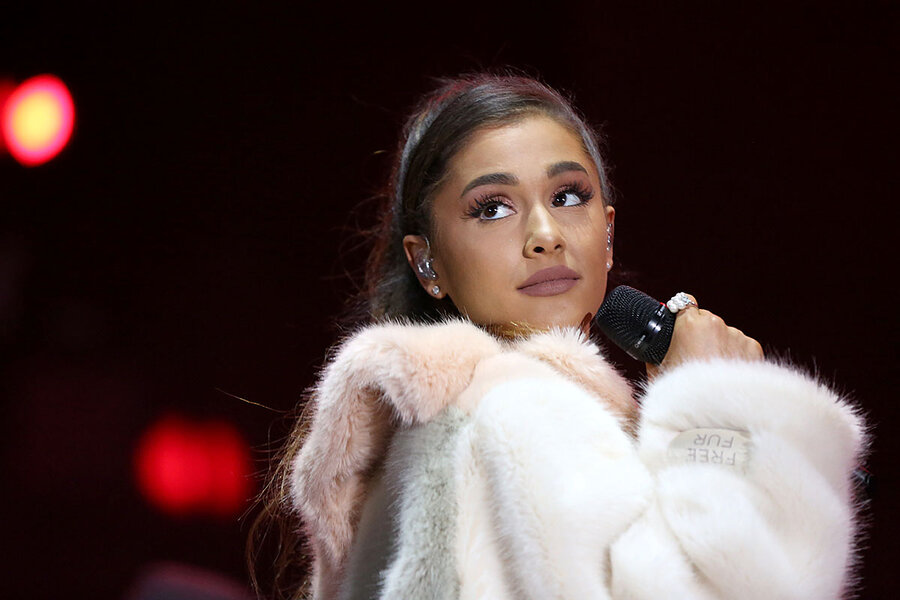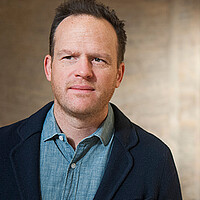How artists can heal – and heal others – after tragedy
Loading...
The American rock band Eagles of Death Metal was performing on stage at the Bataclan, a Paris club, when gunmen opened fire. In the end, the siege left 89 people dead – the deadliest assault of the November 2015 attacks.
It was a harrowing and traumatic experience for fans and musicians alike. But three months later, Eagles of Death Metal traveled back to Paris to retake the stage, playing in front of a packed audience that included Bataclan survivors.
“Music is important … It’s a talisman for helping those people heal, ” said Josh Homme, the band’s drummer, in a recent HBO documentary about their return to Paris. “There’s a very idealistic moment there that can galvanize everyone together. That’s wonderful and hopeful and possible.”
The documentary, “Eagles of Death Metal: Nos Amis (Our Friends),” captures an emotional journey after the attacks for the band and fans. But it also underscores the value of artistic expression and how an assault on cherished cultural institutions – whether at rock concerts in Europe or against theater groups in the Middle East and across Asia – often inspires communities to reaffirm their commitment to the arts, even in the face of deadly violence from jihadist groups such as the Islamic State or oppressive governments.
In many ways, the return of Eagles of Death Metal “planted a flag in the ground that said these people aren’t going to stop us,” says Sean Stuart, the film’s producer, in a phone interview. “They attacked all the things we cherish and the culture we hold dear.”
Regardless of what may have motivated Monday’s suicide bombing at an Ariana Grande concert in Manchester, England, it was an assault on contemporary culture and public participation in the arts. The bomber killed 22 people, including fans as young as 8 years old. For some it was their first pop concert, a rite of passage for many teens and their parents. The event is likely to leave an indelible mark both on Ms. Grande and her legions of loyal listeners, many of whom have flocked to social media to post sorrowful notes for the victims as well as for the pop idol herself.
On Friday, Grande, who had suspended her worldwide tour, responded to the attack with a letter posted on Twitter. “Our response to this violence must be to come closer together, to help each other, to love more, to sing louder and to live more kindly and generously than we did before,” the singer wrote, saying she would return to the “incredibly brave city of Manchester” to put on a benefit concert for the victims and their families. “Music is something that everyone on Earth can share. Music is meant to heal us, to bring us together, to make us happy. So that is what it will continue to do for us.”
Clearly, there’s no set path for performers to return from tragedies like the ones that took place at the Bataclan or in Manchester, but artists often have a unique capacity – and enormous platforms – to help communities grieve and recover from violence. “One of the best ways for people to recover from trauma is to create art about it,” says Cynthia Cohen, director of the Program in Peacebuilding and the Arts at Brandeis University in Waltham, Mass. “In many cases, it’s what artists have to offer.”
That’s especially the case for young people who have experienced violence, she says. “One of the most important roles for artists is to create contexts where young people from different communities around the world can be engaged in expressing themselves creatively in powerful ways,” says Dr. Cohen. “Artists themselves can imagine a better world even in the aftermath of terrorism.”
Reminders of sense and beauty
Art has already helped Manchester heal. At a vigil earlier this week for victims of the bombing, poet Tony Walsh delivered an impassioned reading of “This Is The Place,” his 2015 ode to the post-industrial northern English city written to mark the 20th birthday of the Manchester Arena, where Monday’s suicide bombing occurred. “Because this is a place that has been through some hard times,” read Mr. Walsh. “Oppressions, recessions, depressions and dark times / But we keep fighting back with Greater Manchester spirit.”
For many people, says Cohen, the violent attacks carried out by groups such as the so-called Islamic State or other extremist jihadists can leave them feeling hopeless and helpless. “In the aftermath of something like this, the world seems like a place without sense. Having the reminders of sense and beauty are really important.”
In Pakistan earlier this year, for instance, just days after a suicide bomber attacked a religious site during a Sufi ritual, reportedly killing 85 people, a dancer named Sheema Kermani returned to the site to perform. According to local press reports at the time, she said, “The message is basically of love and peace. I feel that to counter hatred and death, dance and music and other related arts work as therapy and as a bridge.”
Part of a global pattern
While Europe and the West have seen an increase in significant terrorist attacks on cultural institutions, parts of the Middle East and Asia have long dealt with Islamist extremists targeting arts organizations, says Karima Bennoune, special rapporteur in the field of cultural rights for the United Nations. “What we’re seeing now is that what’s happened in certain countries for years has transposed to the international level.”
Like the attacks in Paris, the Manchester bombing was “a crime against humanity, a crime against people, and a crime against culture,” says Ms. Bennoune. “It’s part of a global pattern of attacks.”
In her book, “Your Fatwa Does Not Apply Here: Untold Stories from the Fight Against Muslim Fundamentalism,” Bennoune documents the experiences of many groups in parts of the Muslim world that have long fought back against attacks on the arts. In one case, a Pakistani theater director named Faizan Peerzada defiantly staged a performing arts festival two years after a previous event was targeted in a violent attack.
“It’s absolutely critical to continue cultural life and not to back off on concerts and public enjoyment of cultural life,” she says. “Just as culture and artists have been among the prime targets of extremists so, too, are culture and artists among the primary vehicles that we can use to defy these extremists.”
But that’s no easy task for the artist or performer, especially those who have experienced personal attacks and threats related to their work. After an attack such as the one in Manchester or at the Bataclan, artists can often feel guilty or somehow responsible for the violence inflicted on their fans.
In the Eagles of Death Metal documentary, for instance, it’s clear that the band’s singer Jesse Hughes struggled with how to return to the stage following the horrific events in Paris. “I don’t think there will ever be a day in Jesse’s life that he doesn’t think about what happened,” says Mr. Stuart, the producer. “He feels incredibly responsible and that’s a huge amount of baggage to carry.”
But performance can be as cathartic for the fan as much as it is for the artist. At one point in the film, Mr. Hughes says he’s terrified the attacker may have robbed him of something he can’t get back when he takes the stage again in Paris.
“I’m terrified of getting back and it not being the same,” he says. “I want it to fix me, too.”









